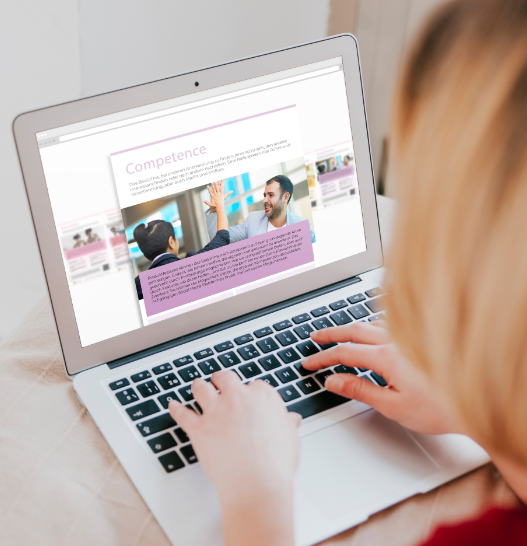The word “usability” crosses your path more and more often and you wonder what exactly it is all about? Maybe you even have a rough idea of the concept behind it, but now you want to know exactly? You want to know how excellent usability can look like in practice? Then our basic terms article is the right place for you.
We explain quickly and precisely what is behind the word “usability” and tell you why good usability is so important for your product.
Usability definition
According to the DIN EN ISO 9241-11 standard, usability is defined as the usability of a (software) product. It is described here as the “extent to which a system, product or service can be used by specific users in a specific context of use. particular context of use can be used to achieve specific goals effectively, efficiently, and satisfactorily.” Usability thus describes how well a service or product is tailored to the requirements and needs of a user.
Many factors play an important role in this. Particular attention must be paid to the context of use, i.e., in which physical and social environment the product is used, and to the users themselves.
This includes:
- The user himself. What abilities and physical and mental prerequisites does he or she have?
- The tasks and work steps that are to be performed with the help of the product.
- The product/service itself with all its characteristics.
- The environment in which the use takes place. In other words, both the physical environment with all its noises, possible distractions and characteristics, and the social environment in which the product is to be used.
According to the DIN standard, the product must be optimized for effectiveness, efficiency and satisfaction. Let’s look at these three points in a little more detail:
- Effectiveness: A product is effective if its usability allows it to be used as purposefully as possible. It must be optimized for the intended work task and its solution. Attention was paid to common standards, such as key assignments, during the design process. Superfluous and confusing controls were avoided.
- Efficiency: Unnecessary workload can be minimized and the use of the product is as simple and goal-oriented as possible. It should be possible to rule out critical operating errors. Interruptions in the operating process are avoided.
- Satisfaction: Have the user’s expectations for the use of the product been met? This is about the user experience of the product. In other words, how does the user perceive the use of the product and how does he react to it? This also includes whether the user receives informative and important feedback during use.
Why is good usability important?
We now perceive good usability as a basic requirement for a product, whereas poor usability is immediately noticeable. Operating errors due to unclear instructions, cumbersome and difficult use, or an interface that requires a lot of learning effort to operate – the examples are endless. The reaction to poor usability: frustration, anger and stress. This results in a poor user experience, i.e. a product that is not easy to use will not be a pleasure to use.
The importance of usability is proven by a statistic published by Uxeria, which states that 70 percent of all online businesses fail because the usability of their websites is too poor for the user. (source)
So if you don’t want to be one of those 70 percent, you inevitably have to ask yourself an essential question: How do I achieve good usability for my product?
How do you achieve good usability for your product?
To achieve usability optimization, UX designers & user researchers take up the cause. They include humans as a factor in product usage. In doing so, it is important to really test: To get the true user needs that guide the usability design process, it’s not enough to guess. Real user data leads to much better results than the often consulted gut feeling. Read here how we optimize the usability of your product.
The goal of Usability Testing is to achieve a design that relieves the user of as much thought and effort as possible and ensures effectiveness, efficiency and satisfaction.
For a more detailed insight into how a User Interface Design is created from Usability and User Experience Testing, read our article “From UX Testing to User Interface Design“.
Conclusion
Usability is becoming increasingly important and is not “on everyone’s lips” for no reason. It is more than simple usability. A very good usability is the basis for a successful product and the basic requirement for a good user experience.
Walk through your everyday life with your eyes open for the next few days. You will find countless examples of good, but especially of bad usability. Pay close attention to the feelings that products with good usability trigger in you and the feelings that products with poor usability trigger in you. You have already felt first-hand how important usability is in product design.
What were your observations in your private and professional environment? Where did you notice the usability of a (software) product in a particularly positive or particularly negative way?
We look forward to hearing from you. Feel free to comment on this post or get in touch via our contact form.



